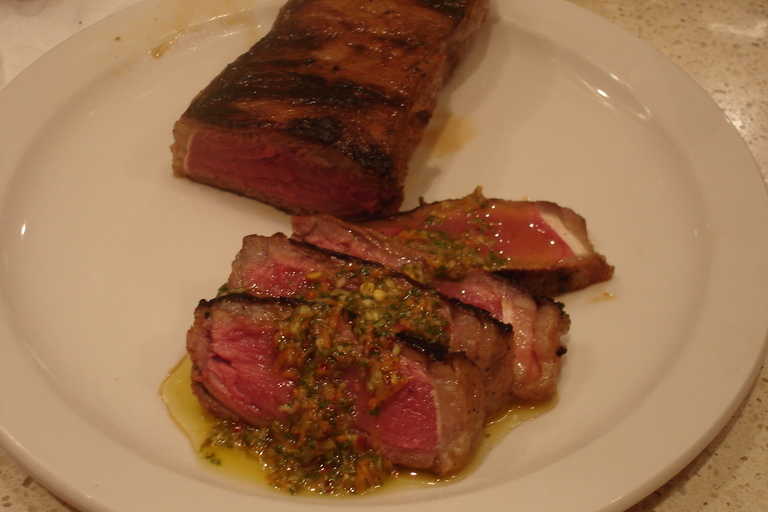Types of Kitchen Knives
Whether you are slicing bananas for your morning cereal, chopping onions or carving the holiday turkey, every home cook knows that a proper set of knives is key for getting the job done.
No tools are more important than a working set of knives; they are the cornerstone for nearly every culinary task in the kitchen.
Avoid the temptation to pick up secondhand knives or knives that clearly exhibit extreme wear and tear. Knife injuries in the kitchen can be very serious.
However, if you’ve been looking for a fresh set or a starter set, for yourself or as a gift, we’ve got the lowdown on what you need and why.
What to Look for in a Knife
First, look for a solid blade that runs from the tip to the butt (top to bottom). This ensures that the blade will remain stable from end to end. Look for rivets that hold the tang (handle) flush with the surface, keeping out moisture that could trap bacteria and pose a safety hazard.
The blade material can be made from a variety of substances, depending on your budget. Ceramic is popular, as are other metal alloys, but the longest lasting blades are made with Damascus steel. Look for a ‘bolster’ which is a safety feature for your fingers to grip: that space between the handle and the beginning of the blade. Finally, the blade should be smooth and without burrs (microscopic rough edges) or warping.
Different Types of Kitchen Knives and What They’re Used for
Knives can be sold individually, but they mostly come in sets, which makes them more affordable. Here are the basic types of kitchen knives and an “extra” that will make you feel like real pro!
3.5” Paring Knife
These are the small, handheld knives that are perfect for peeling (or “paring”) smaller fruits and vegetables. Paring knives are also good for deveining shrimp and cutting away the pith in bell peppers, as well as for creating simple garnishes from apples, radishes or tomatoes.
5.5” Utility Knife
This is literally the jack knife of all trades. Next to the classic 8” chef knife, the utility knife is the one you’ll probably use most often. Use these knives for slicing meat, small potatoes, and sandwiches or burgers. This is the all-purpose knife for picnics and camping trips!
6.5” Boning Knife
Boning knives have narrow blades with a gentle outward curve and a very defined tip. This style of knife is predominately used to remove the bones from delicate pieces of fish and the sinew from poultry, beef and pork without damaging the flesh.
8” Chef’s Knife
With practice, your chef knife might be the only knife you’ll ever need as it’s short enough to cut through bread and vegetables, but it’s also long enough to slice through larger items like roasts and melons.
10” Bread Slicer
A bread slicer is expressly used for slicing loaves of bread. Its serrated edges cut through soft bread items without crushing them.
11” Santoku with a 6” Blade (Bonus Knife – Nice to Have)
A Santoku is a formidable looking knife that is similar to a chef’s knife, but features a “Granton” edge, which is a scalloped design that creates little air pockets between the knife and starchy foods like potatoes, yams, eggplant or melons. This distinctive edge keeps the food from sticking to the blade. Santoku means “three virtues” for slicing, chopping and mincing. Unlike a chef’s knife, a santoku has a rounded tip and wide blade for uniform performance.
How to Care for Knives
A good set of quality knives will last for years if they are cared for properly. Knowing how to wash and store them will not only keep them in tip-top shape, but will also reduce the risk of injury for the user. Proper care, cleaning and regular sharpening maintenance will guarantee superior usability for years to come.
Washing
Never submerge knives in water or wash them in the dishwasher. The fine cutting edges can easily be bent or warped if they come in contact with other items. Plus, you run the risk of injury if you reach into sudsy water for a knife you can’t see.
Wash knives individually in warm water, being careful to face the blade away from you. Rinse them and lay them on a kitchen towel or gently pat them dry.
Storing
Store knives in a specially made knife block (most sets come with one) or on a magnetic knife strip on the wall. Some home cooks have fabric knife rolls with designated slots for knives that can then be rolled up and placed in a drawer or cupboard. This is a great option if you are transporting your knives to another location to cook.
Sharpening Your Knives
For pricier sets, it’s definitely worth the money to send them to a professional if you won’t need your knives for a few hours. There are many ways to sharpen your knives, but each method takes know-how and a bit of practice.
The most common method is using a steel, however, a steel doesn’t really sharpen your knife; it simply straightens (or hones) any edges that become bent or curled with prolonged use.
To learn more, check out this beginner’s guide for sharpening your knives at home.

